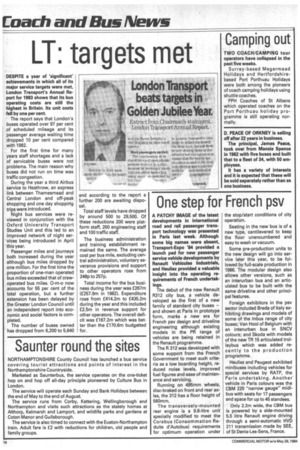Coach and Bus News
Page 18

If you've noticed an error in this article please click here to report it so we can fix it.
LT: targets met
DESPITE a year of 'significant' achievements in which all of its major service targets were met, London Transport's Annual Report for 1983 shows that its bus operating costs are still the highest in Britain. Its unit costs fell by one per cent.
The report says that London's buses operated over 97 per cent of scheduled mileage and its passenger average waiting time dropped 10 per cent compared with 1982.
For the first time for many years staff shortages and a lack of servicable buses were not problems. The main reason why buses did not run on time was traffic congestion.
During the year a third Airbus service to Heathrow, an express link between Thamesmead and Central London and off-peak shopping and one day shopping trips were introduced.
Night bus services were reviewed in conjunction with the Oxford University Transport Studies Unit and this led to an improved network of night services being introduced in April this year.
Passenger miles and journeys both increased during the year although bus miles dropped by one million. For the first time the proportion of one-man operated bus miles exceeded that of crewoperated bus miles. 0-m-o now accounts for 55 per cent of the total operation, but a further extension has been delayed by the Greater London Council until an independent report into economic and social factors is completed.
The number of buses owned has dropped from 6,200 to 5,640 and according to the report a further 200 are awaiting disposal.
Total staff levels have dropped by around 500 to 29,500. Of these reductions 200 were platform staff, 200 engineering staff and 100 traffic staff.
The business administration and training establishment remained the same. The average cost per bus mile, excluding central administration, voluntary severance provisions and support to other operators rose from 248p to 257p.
Total income for the bus business during the year was £267m (£257.9m in 1982). Expenditure rose from £414.2m to £435.2m during the year and this included £2.5m in revenue support for other operators. The overall deficit was £167.2m which was better than the £170.6m budgetted for.








































































































